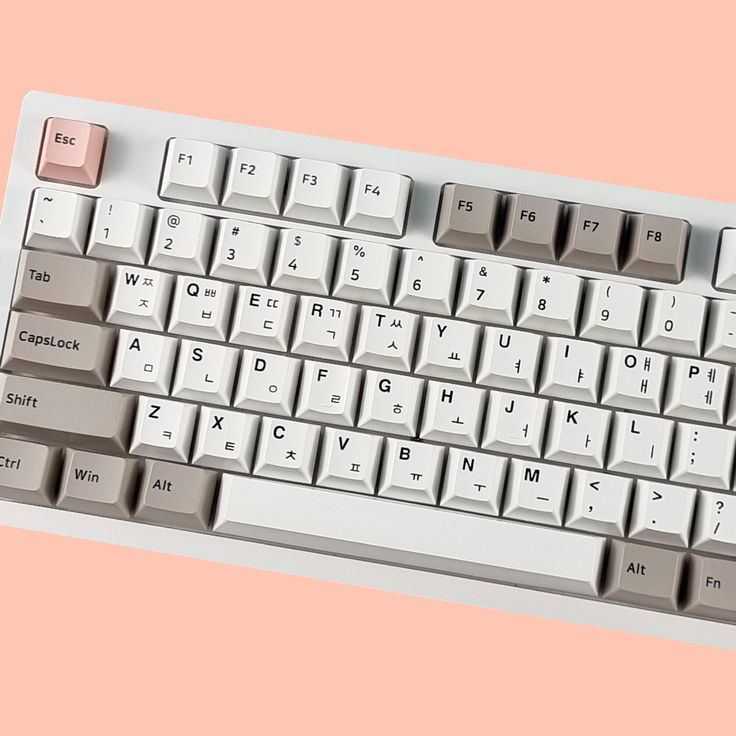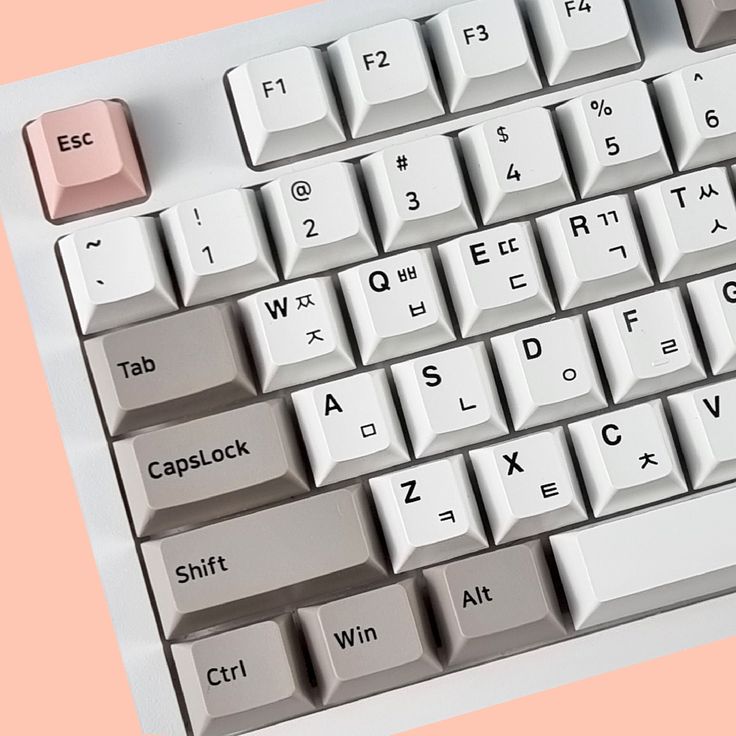Introduction to Korean Keyboard Layouts
Getting familiar with Korean keyboard layouts is crucial if you want to type efficiently in Korean. Understanding the layout helps you locate keys quickly and develop muscle memory for faster typing.
Standard Korean Keyboard Layout
The standard Korean keyboard layout, also known as 2-set Korean, is the most widely used. It features both Hangul and English letters. Hangul characters are grouped into syllable blocks. Each block combines an initial consonant, a vowel, and sometimes a final consonant. This layout mirrors the English QWERTY layout, making it easier for those already familiar with English typing to adapt.
Alternative Korean Keyboard Layouts
There are several alternative layouts that some typists prefer. The 3-set Korean, for instance, rearranges keys for professional typists who require speed and efficiency. Others may opt for the ‘naratgeul’ keyboard, which places the most frequently used letters in the central part of the keyboard. Alternative layouts might take time to master but can lead to improved typing speeds for some users. Exploring these options will help you determine which layout best suits your typing habits and needs.

Essential Korean Typing Techniques
Mastering Korean typing involves more than just familiarizing oneself with the keyboard layout. It encompasses adopting effective techniques that enhance both speed and accuracy over time. Here, we’ll discuss some essential strategies to refine your Korean typing proficiency.
Accuracy Before Speed
Prioritizing accuracy before speed is crucial when learning to type in Korean. Early focus on speed can lead to frequent mistakes, slowing down overall progress. Here are some tips to improve your accuracy:
- Start Slow: Begin by typing at a slow pace to ensure each keystroke is correct, gradually increasing your speed as you gain confidence.
- Visual Confirmation: Regularly check the screen as you type to confirm correct character placement.
- Consistent Practice: Practice regularly, aiming for precise and correct keystrokes during each session.
Emphasizing accuracy first lays a strong foundation, eventually leading to increased typing speed without sacrificing the quality of your work.
Use of Right Fingers for Right Keys
Using the correct fingers for specific keys is another essential technique in efficient Korean keyboard typing. This practice not only helps in speeding up your typing but also in reducing the strain on your hands. Here is how you can ensure correct finger usage:
- Familiarize with Finger Positions: Learn and memorize which finger to use for each key.
- Regular Drills: Engage in typing drills that focus on finger placement and movement.
- Keyboard Mapping: Consider using keyboard covers or stickers that map out which finger goes on which key, aiding in muscle memory development.
By following these tips and continuously practicing, you can enhance your typing skills on a Korean keyboard, making your typing faster and more intuitive.
Practice Exercises for Korean Typing
To excel in Korean typing, regular and structured practice is essential. Diverse exercises can help embed the Korean keyboard layout in your muscle memory. We’ll look at two ways to sharpen your skills: keyboard covers and online tutorials.
Using Keyboard Covers for Practice
Keyboard covers are a practical tool for learning Korean typing. These silicon or plastic sheets fit over your keyboard and can show Hangul characters, helping you memorize their locations. Here’s how they can aid your practice:
- Visual Guide: They provide a visual layout of the Korean keyboard, reinforcing the key placements as you type.
- Protection: Covers protect the keyboard from dust and spills, maintaining your hardware as you learn.
- Feedback Removal: By obscuring the English letters, they force you to rely on your memory for Hangul character placement, enhancing learning.
Using keyboard covers in your practice sessions can speed up the learning process and make you less reliant on visual cues over time.

Online Korean Typing Tutorials
Online tutorials are a versatile resource for mastering Korean typing. These programs cater to various skill levels, from beginners to advanced typists. Here’s why they are beneficial:
- Interactive Lessons: They offer interactive exercises that improve your typing technique and speed.
- Instant Feedback: You receive immediate feedback on your accuracy and speed, helping you identify areas for improvement.
- Convenience: With internet access, you can practice anytime, anywhere, making it easier to fit into your routine.
Combining keyboard covers with online tutorials can give a comprehensive practice experience, improving your Korean typing skills effectively and efficiently. Keep practicing with these tools, and you’ll see significant improvements in your typing proficiency.
Useful Tools and Softwares
Enhancing your Korean keyboard typing skills involves leveraging the right tools and software. These can significantly accelerate the learning curve while making the process engaging and efficient.
Korean Typing Software Reviews
There are numerous Korean typing software available that can assist in mastering the keyboard layout. When selecting a typing software, consider the following:
- User Interface: Look for software with a clean, easy-to-navigate interface.
- Progress Tracking: Opt for programs that offer detailed feedback on your typing speed and accuracy.
- Customization: Choose software that allows you to customize exercises according to your proficiency level.
Interactive Typing Games
Interactive typing games are an effective way to practice Korean typing while having fun. These games often include timed typing tests and word games, which help improve speed and accuracy.
- Timed Challenges: Engage in games that push you to type faster under time constraints.
- Vocabulary Building: Play games that incorporate new Korean vocabulary to enhance your typing and language skills.
Using a combination of interactive games and comprehensive software can provide a well-rounded approach to mastering Korean typing.
Typing Challenges and Competitions
Engaging in typing challenges and competitions can greatly enhance your typing skills.
Speed Typing Tests
Speed typing tests are a popular way to measure your typing proficiency. These tests track how many words you type per minute (WPM). They not only reveal your current speed but also show progress as you practice. To benefit from speed tests:
- Measure Progress: Regular speed tests can help you see your improvement over time.
- Set Goals: Aim for a specific WPM milestone and work towards it.
- Focus on Accuracy: Ensure you maintain accuracy while increasing speed, as errors can slow you down.
By incorporating speed tests into your routine, you build momentum and motivation to keep improving your Korean keyboard typing skills.

National Korean Typing Competitions
Participating in national Korean typing competitions can take your skills to a higher level. Competitions often have participants from different backgrounds, and they offer a unique platform to benchmark your skills against others. Here’s how you can get involved:
- Research Events: Look for information on upcoming Korean typing competitions.
- Prepare Thoroughly: Practice consistently, focusing on both speed and accuracy to prepare for the competition.
- Learn from Peers: Use these events as a learning experience by observing and interacting with other typists.
National competitions motivate you to push your limits and can be an exhilarating way to gauge your proficiency with the Korean keyboard.
Tips for Faster Learning
Learning to type on a Korean keyboard can be challenging, yet with the right approach, you can accelerate the process. Adopting effective learning strategies makes a significant difference. Let’s explore some practical tips for faster learning.
Daily Practice Routine
Consistency is key in mastering Korean keyboard typing skills. Establishing a daily practice routine is vital. Here’s how you can make the most of your practice sessions:
- Set Defined Goals: Determine what you want to achieve each day, whether it is learning new characters or increasing your typing speed.
- Create a Schedule: Allocate specific time slots for practice. This helps in building a habit and ensures regular progress.
- Mix Up Exercises: Incorporate different types of exercises like typing paragraphs, drills, and speed tests to keep the practice engaging.
By maintaining a structured daily routine, you’ll gradually see improvements in your typing speed and fluency on the Korean keyboard.
Error Analysis and Feedback Mechanisms
Learning from mistakes is an effective way to improve typing skills. Utilizing error analysis and feedback can guide your practice. Here’s how to do it:
- Review Mistakes: After each typing session, go back and review the errors you’ve made to understand your weak points.
- Use Software Tools: Some Korean typing software offers detailed feedback on your typing patterns, identifying common mistakes.
- Seek External Feedback: Occasionally, get someone else to observe your typing. They may notice things you’ve missed.
Applying these methods for feedback and analysis helps to identify areas that need more attention, enhancing your learning curve with the Korean keyboard.
How to Maintain Your Korean Typing Skills
Maintaining your Korean typing skills requires dedication and the use of effective strategies. Here we explore key practices that help keep your skills sharp and efficient.
Regular Practice Sessions
Regular practice is crucial for keeping your Korean keyboard skills sharp. Consider these tips:
- Set a Schedule: Dedicate specific times each week for typing practice.
- Vary Your Exercises: Mix different types of exercises to cover various aspects of typing.
- Simulate Real-life Scenarios: Practice typing emails, conversations, or reports to apply your skills.
With consistent practice, you can ensure your Korean typing remains fluent and fast.
Staying Updated with Typing Software
Using the latest typing software helps enhance your practice sessions. Here are ways to stay updated:
- Check for Updates: Regularly update your software to access new features and exercises.
- Explore New Tools: Look for newly released tools that can offer innovative ways to practice.
- Review Software Effectiveness: Regularly assess the effectiveness of your current tools and make changes if necessary.
Employing up-to-date software ensures your practice is effective and aligned with current typing methodologies.